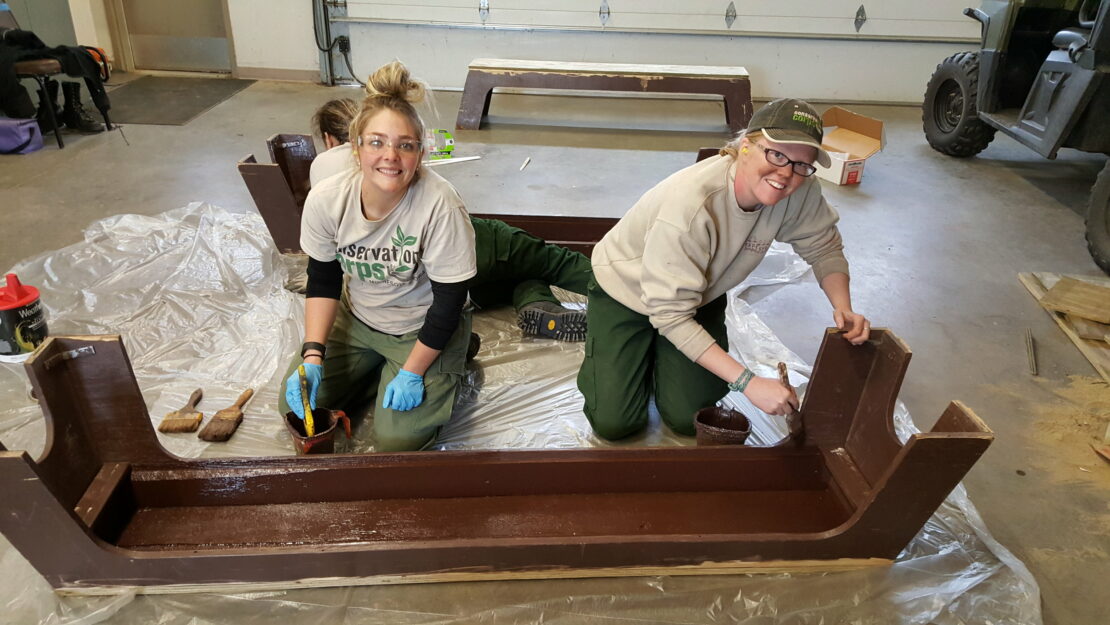St. Paul Roving Crew Roves up to Sherburne National Wildlife Refuge

By: Aimee Junget

It was a sunny Tuesday morning the day our crew truck pulled into the shop at Sherburne National Wildlife Refuge and our crew leader said, “Guys, I think it’s a burning day…” I remember my heart starting to beat faster–with both excitement and the anxiety that I had no idea what to expect. We had gone to fire training and received our Red Cards just weeks before, but had yet to actually perform a burn. We received our briefing which consisted of weather, overall strategy, and safety.

After our briefing, our CCM crew piled into the truck to meet the rest of the refuge staff out at the burn unit. Being that 4 out of the 5 of us had never burned, we were way too excited for our first fire. On our way to the unit, we cued up a playlist that consisted of “We Didn’t Start the Fire”, “Burning Ring of Fire’”, etc. Nerdy, right? But when we arrived at the burn unit it was all business. Before we knew it, we were lighting drip torches and laying fire on the ground. As the backing fire turned into a running fire, the flames grew to 10 feet and put on quite a show. Then, as fast as the flames ran across the field, they were gone as is typical with fast-burning prairie grass that meets a wet-line. My eyes were watery from the smoke, my snot was black, but I felt accomplished to have completed my first burn.
While performing prescribed burns is exciting, the reality about burning is that it is not constantly running around with drip torches setting forests on fire. There is extreme preparation that goes into creating burn units. Many a day our crew spent clearing leaves, cutting up logs, and throwing sticks, as it is equally important to be able to stop the flames where your prescribed burn stops. This is done by clearing a path at least 8-10 feet wide where the burn can effectively stop so that it doesn’t become a fire much larger than you planned (yikes!). As many people have asked me, “Why are you burning nature if you claim to love it?”, the truth is that wildland fires are a natural occurrence. The staff at Sherburne Wildlife Refuge, with the support of many other interests, are working to restore the refuge to oak savannah, as it was once the most prevalent vegetation type in the Midwest but is scarce today. From the words of the Sherburne National Wildlife Refuge Comprehensive Conservation Plan, the health and sustainability of oak savanna depends on wildfire that can be maintained by prescribed burning. Burning encourages the growth of native wildflowers and grasses which provide food and shelter for wildlife, as well as opening up the canopy in areas that are more wooded to renew oak savanna.
So while fire may seem to destroy and terminate, it is also meant to restore and revitalize some of the most treasured habitats native to our state.
So that’s what the St. Paul Roving Crew has been up to in 500 words. Thanks for the read and Happy May!
